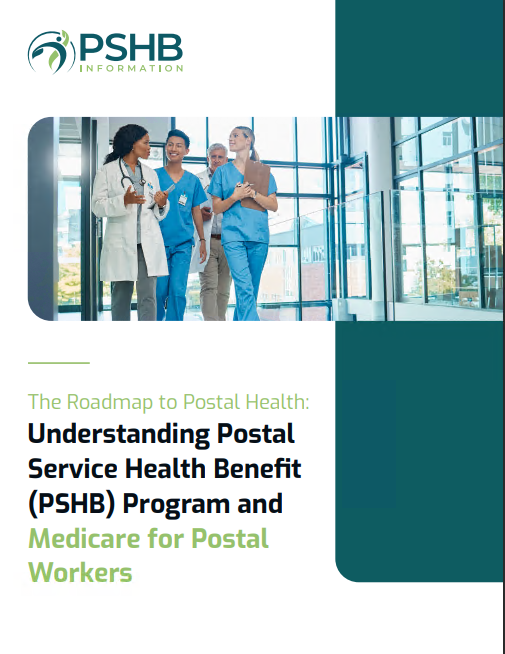Key Takeaways
- The Postal Service Health Benefits (PSHB) program launches in 2025 and Congress is actively monitoring its implementation.
- Lawmakers are focusing on how the program will affect postal employees and retirees while ensuring costs and benefits align with expectations.
Congress Is Watching the PSHB Rollout Closely—What Lawmakers Expect from USPS’s New Health Benefits Program
The U.S. Postal Service (USPS) is set to launch its Postal Service Health Benefits (PSHB) program in 2025, and Congress is paying close attention. The transition from the Federal Employees Health Benefits (FEHB) program to the PSHB will impact hundreds of thousands of postal workers and retirees. Lawmakers are keen to ensure that the USPS effectively manages the shift while safeguarding the interests of those it serves. Congressional oversight aims to guarantee that the PSHB program offers a cost-effective solution without compromising quality healthcare benefits for its members.Why Is Congress Focused on the PSHB Rollout?
The implementation of the PSHB program is crucial, and Congress has numerous reasons for its involvement. The USPS’s transition involves separating postal workers and retirees from the FEHB and integrating them into a newly structured system that will operate under the PSHB umbrella. This is a monumental change that lawmakers are scrutinizing to ensure the USPS can manage its costs while maintaining benefit standards for its employees and retirees. The central concern for Congress is whether the PSHB program will effectively reduce the financial burden on the USPS while ensuring that employees and retirees experience minimal disruption. Given that the USPS has been facing financial difficulties for years, lawmakers see the PSHB as a potential tool to alleviate some of these strains. However, if mismanaged, the transition could lead to higher costs or reduced benefits—outcomes Congress is eager to avoid.What Do Lawmakers Expect from the USPS?
To ensure the success of the PSHB program, lawmakers have set specific expectations for the USPS. These expectations center on transparency, efficiency, and stability. Here’s what Congress is prioritizing:- Smooth Transition: The USPS must ensure a seamless shift from FEHB to PSHB. This includes clear communication with all employees and retirees about what changes they can expect and how they will be affected. Lawmakers are particularly concerned that a poorly managed rollout could cause confusion and dissatisfaction among postal employees and retirees.
- Cost Management: Congress wants to see a balanced approach where the PSHB program effectively manages costs without sacrificing quality. Lawmakers expect the USPS to demonstrate how it will reduce its long-term liabilities through the PSHB program, while keeping healthcare costs reasonable for participants.
- Benefit Quality Assurance: Maintaining the quality of benefits is another key expectation. The USPS must show that the PSHB program will offer comprehensive coverage that meets or exceeds the standards previously set by FEHB. Congress is likely to monitor this closely to prevent any degradation in the quality of healthcare services provided.
How Will PSHB Differ from the FEHB Program?
The PSHB program is distinct from the FEHB in several critical ways. While the FEHB served both federal and postal employees, the PSHB will be exclusively for USPS employees and retirees. This change means that the USPS will have greater control over the management and design of its benefits program, allowing it to tailor plans specifically to the needs of postal workers. However, this also places greater responsibility on the USPS to manage the program efficiently. Under PSHB, eligible retirees must enroll in Medicare Part B when they become eligible, a requirement that was not mandated under the FEHB program. This integration with Medicare aims to streamline costs for the USPS by shifting some of the medical expenses to Medicare, reducing the overall financial burden on the USPS. Congress sees this shift as a key aspect of the program’s sustainability, but it also wants to ensure that retirees receive sufficient support and guidance in navigating these new requirements.The Congressional Oversight Process
Congress has several methods for overseeing the rollout of the PSHB program. Committees such as the House Oversight and Accountability Committee will likely conduct hearings, gather reports from USPS officials, and work with federal agencies to track progress. These sessions are designed to ensure that the USPS remains accountable and that any issues or concerns are addressed promptly. Additionally, lawmakers will likely work with the Office of Personnel Management (OPM), which administers the FEHB and will have a role in the transition. This collaboration aims to ensure that the expertise and resources of the OPM are utilized effectively during the switch to PSHB. Congress will also seek updates from the Government Accountability Office (GAO) to assess the financial and operational impacts of the new program.What Challenges Does the PSHB Program Face?
The transition to the PSHB program is not without its challenges. Lawmakers are aware that changes on this scale are complex and can come with unintended consequences. Some of the key concerns include:- Administrative Hurdles: Integrating the new PSHB program requires coordination between multiple agencies and stakeholders. Congress expects the USPS to manage this complex web of relationships effectively to avoid administrative delays or miscommunications that could negatively affect employees and retirees.
- Enrollment Process and Education: One of the significant challenges is ensuring that postal employees and retirees understand the changes and know how to enroll in the PSHB program. Given the mandatory enrollment in Medicare Part B for retirees, clear guidance and support must be provided. Congress expects the USPS to create comprehensive educational resources that help members understand their options, costs, and benefits under the new system.
- Cost Management and Budgeting: While the PSHB program is designed to be a more cost-effective solution, lawmakers want to see concrete evidence that it will deliver on this promise. Congress is closely monitoring the financial projections associated with the PSHB rollout to ensure that it does not inadvertently increase costs for postal workers or the USPS itself.
What Are the Potential Benefits of the PSHB Program?
Despite the challenges, the PSHB program offers several potential benefits that align with congressional goals:- Tailored Plans for Postal Workers: By focusing exclusively on USPS employees and retirees, the PSHB can be more responsive to the unique needs of this group. This targeted approach allows for the design of plans that prioritize specific healthcare needs commonly faced by postal workers.
- Long-Term Cost Savings: The integration of Medicare into the PSHB program has the potential to lower long-term costs for the USPS. By having retirees enroll in Medicare Part B, the USPS can share costs with the federal government, reducing its financial burden. Congress is hopeful that these measures will help stabilize the USPS’s financial outlook.
- Enhanced Support for Retirees: The PSHB program aims to provide retirees with better support and resources as they transition into Medicare. Congress is particularly interested in how these efforts will improve access to information and support, ensuring that retirees make informed decisions regarding their healthcare.








